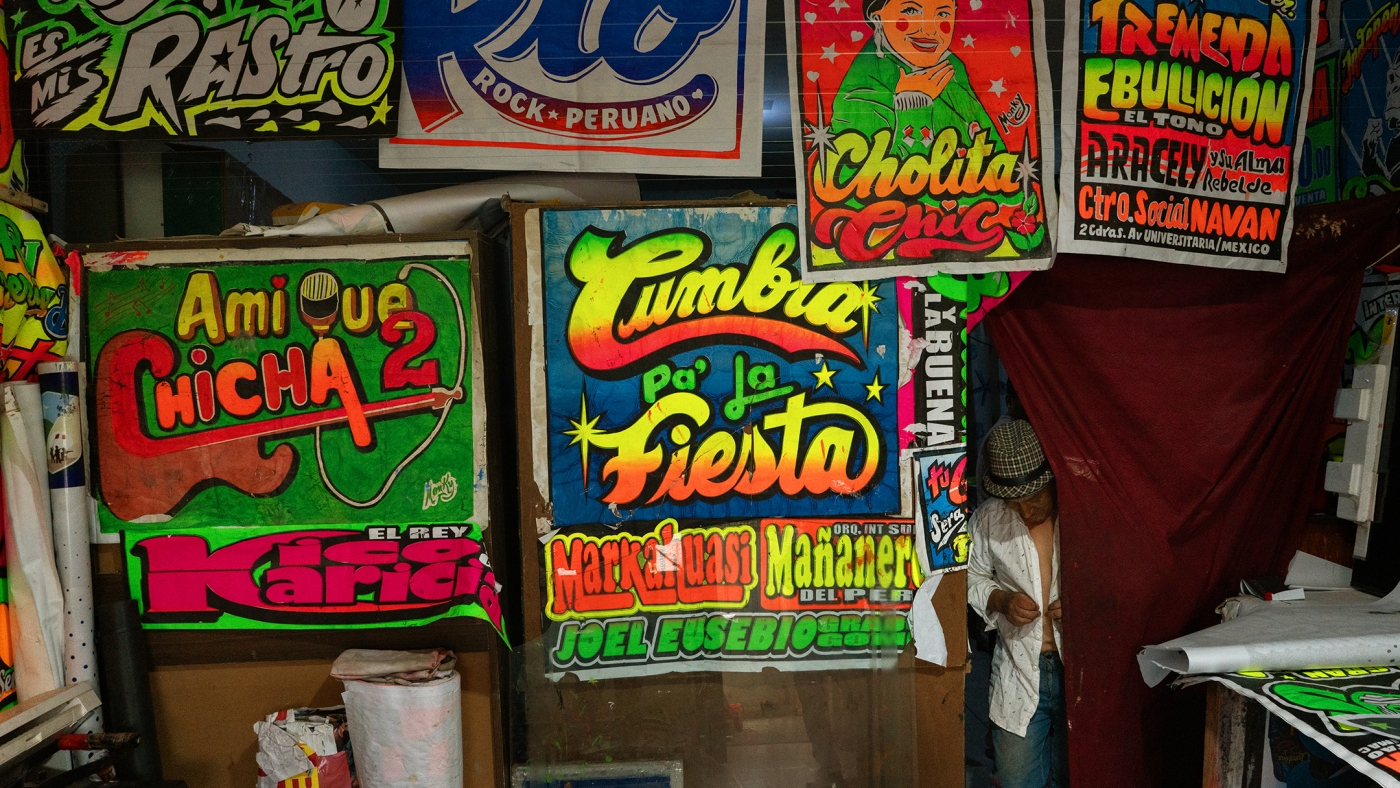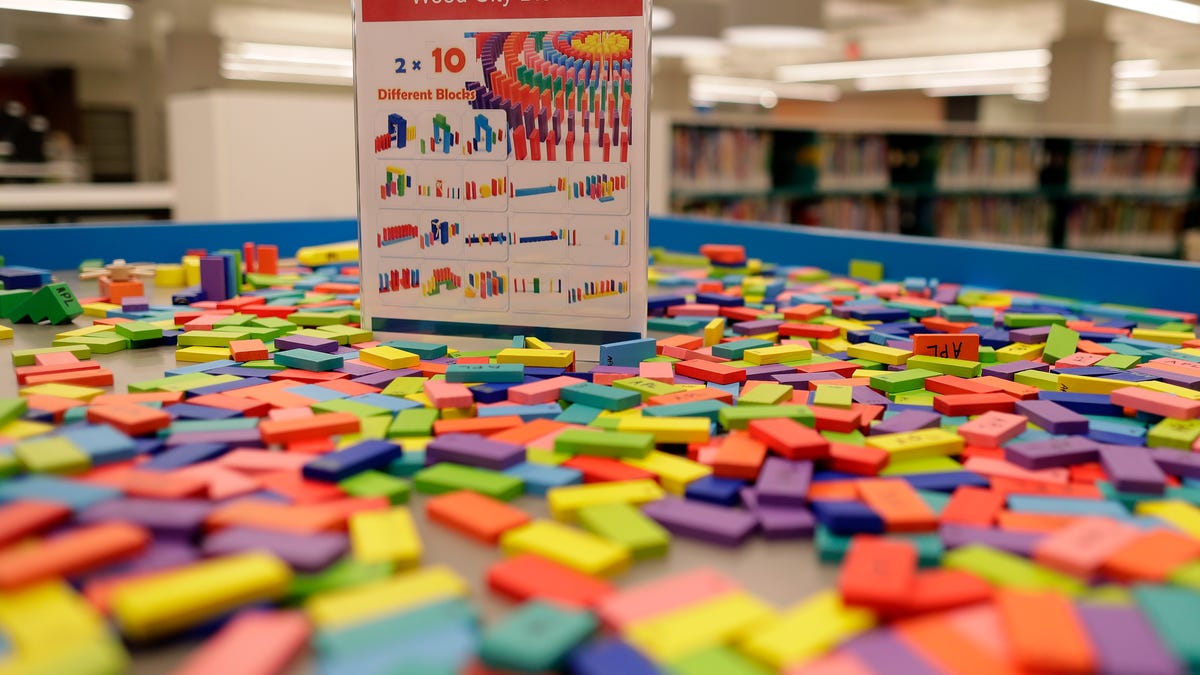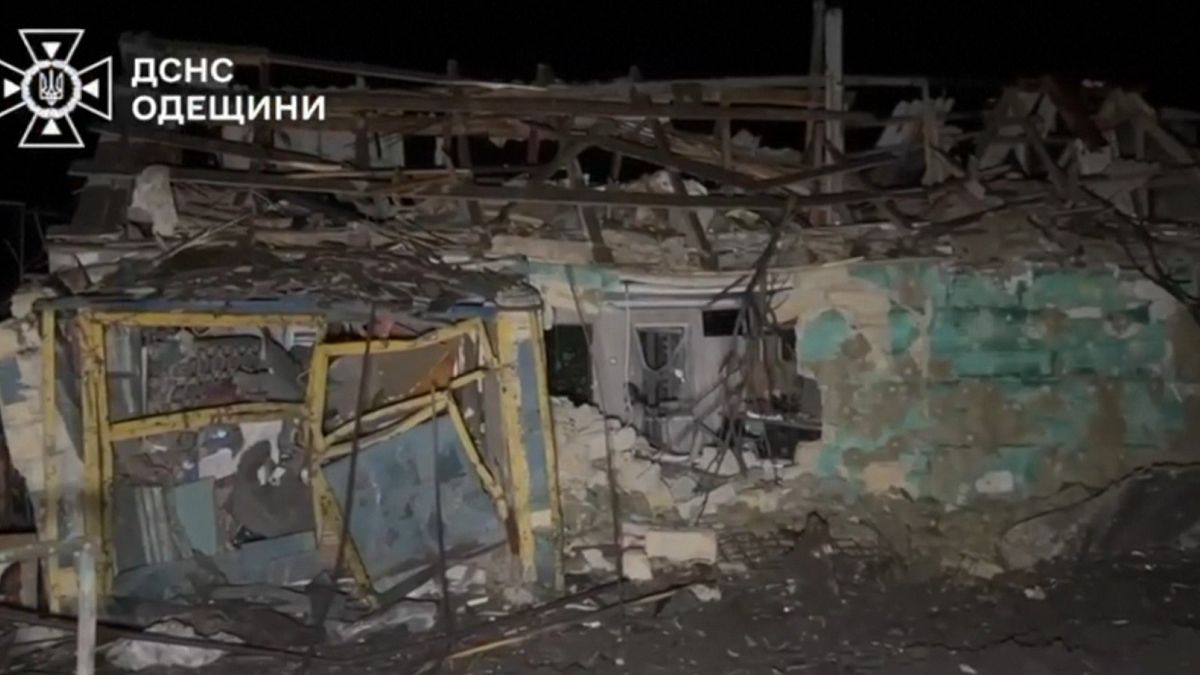Lifestyle
Joey Arias has plenty of art left to give: ‘I want to live to be at least 200 years’

Joey Arias hitting the high notes at Barrel House Cafe and Bar in Washington, D.C.
Ryan Benk/NPR News
hide caption
toggle caption
Ryan Benk/NPR News
At 76, cabaret artist Joey Arias’ resume reads like the movie Big Fish. The tales are almost too tall to believe, but he’s really done them all.
He’s sold clothes to Spanish royalty, sung backup for David Bowie, performed at the 2015 centennial celebration for jazz legend Billie Holiday, and even played ringmaster for Cirque Du Soleil’s first ever adult show.
But perhaps this creature of New York is best experienced in a small, swanky, and dimly lit club – the kind of place where you can cozy up to strangers in the safety of relative darkness, while leaving your problems at the door.
A place like Northwest Washington, D.C.’s, Barrel House Cafe and Bar, where on a recent night, the petite Joey Arias slinked up to the stage on black leather high heels, sporting jet black bangs, deep red lipstick and a corset pulled so tight it’s a wonder he can even breathe.
“I’m so happy. So honored to be here in D.C. Are you comfortable? Are you feeling sexy?” Arias asks with his trademark smirk.
It’s best to go into your first Joey Arias show sans expectations. It’s musical, sure, but it’s not a concert. He’s surely sultry and serious, but he’s also a comedian. And be mindful of your aura, as Arias is likely to read your mood with a single look.
“Improv is kind of my strongest point with my career. So I start collecting ideas and think, you know, ‘what should I talk about?’” Arias says. “And then when the show starts, the audience kind of tells me what they want.”
During a show, Arias will often consult a giant songbook he calls his bible. With long, black press-on nails, he flips through it like a list of spells. It includes years of handwritten notes, some classic rock covers, original music, and jazz standards he can sing so eerily perfect that they’ll have you thinking Billie Holiday was reincarnated as a septuagenarian gay man.
Arias prefers to approach the daylight incognito, in an all-black tracksuit, sipping a six-espresso-shot venti coffee and wearing large black sunglasses reminiscent of Italian actor Marcello Mastroianni’s character in Federico Fellini’s 8 1/2.
When asked where his penchant for entertaining started, Arias replies with a chuckle.
“I think it first started when I landed on this planet. I tell people, I wasn’t born here. I was brought here,” Arias says.
Arias landed in Fayetteville, N.C., and grew up in California.
“I think I was creating and reinventing myself constantly, even as a child. It kind of worried my parents because … even at the age of like nine years old, I was dying my hair and tweezing my eyebrows and doing weird things to myself,” he says.
Arias calls himself a shapeshifter.
“People always think: ‘oh I know Joey.’ No, you don’t know Joey,” Arias explains.
If there’s anyone who DOES know Joey Arias, it’s Kim Hastreiter, founder of Paper Magazine. She met Arias while a student at CalArts in Southern California.
“We grew up together… he was like my bestie,” Hastreiter says. In her recent memoir, Stuff: A New York Life of Cultural Chaos, she devotes an entire chapter to Arias.
“Joey is everything to me – my brother, my husband, my sister, my mother, and my soulmate,” Hastreiter writes in the book, “And I know, I am that for him.”
When she graduated from CalArts in the mid-1970s, Hastreiter says Arias offered to help move her to New York City. She wasn’t allowed to sublease her apartment, so she had to switch places with the new tenant quickly.
“[Joey] helped me move out in the middle of the night through the window, literally. We packed my dragon wagon. It was crazy,” Hastreiter tells NPR.
The dragon wagon was Hastreiter’s old pickup truck emblazoned with a long, colorful dragon along the side.
“We made this whole itinerary, and we went to every thrift shop between L.A. and New York,” she says.
Hastreiter and Arias arrived in New York in 1976. They shared an apartment, both got jobs, and went dancing every night. She says her soulmate Joey Arias just never looked back.
He started working as a sales associate at the Italian fashion brand Fiorucci’s flagship store in the United States. And Arias quickly became a draw, acting as a living mannequin who once spoofed patron Andy Warhol and played fashion consultant for the then-Queen of Spain.
“It was sexy with the way it was lit. It was beautiful and all the Italians were always there to market,” Arias says. “And it was the beginning of my redefining and reinventing who I was [again].”
Arias eventually made friends with German avant-garde opera singer Klaus Nomi and he began performing with him, even joining Nomi on stage with David Bowie as the musical guests for Saturday Night Live.
YouTube
Arias often performs a song he wrote in tribute to Nomi, who died of AIDS in 1983 at age 39.
“Klaus had pneumonia… and I went to the hospital and I had to put a paper jumpsuit on. I went in there and he was looking at me and he said ‘I can’t see you.’ I took everything off and I hugged him, kissed him on the cheeks. The doctors were so mad [at me],” Arias says.
AIDS created a tragic duality for Arias’ contemporaries of this particular time and scene: a burgeoning underground movement of artists and performers populated by blindingly colorful lights that were being snuffed out as quickly as they came to life.
Arias recalls losing collaborators, friends and even lovers of his, like Chuck Smith.
“We were supposed to grow old together. But he’s always guided me spiritually. I know that,” Arias says.
Shortly after Nomi died, Arias remembers Smith rolling over in bed one night and whispering simply “I have it.” He died a short time later.
“At that point, that was the sentence. If you said you had it, you had less than a year to live,” He adds. Arias says he doesn’t really know how he made it through that period alive.

Joey Arias at Barrel House Cafe and Bar
Ryan Benk/NPR News
hide caption
toggle caption
Ryan Benk/NPR News
In the following years, he continued performing throughout New York City clubs before getting the role of a lifetime: Emcee for Cirque du Soleil’s first adult-themed show at the New York, New York Casino in Las Vegas.
Arias also wrote songs for the show. It was called Zumanity.
The show was raunchy, outrageous and sexy. The perfect vehicle for a performer like Arias. But it was also grueling.
YouTube
After years of doing ten shows a week, Arias says the show’s doctor gave him prescription pain killers. He became addicted and his then-husband asked him for a divorce.
“It seemed like things were falling apart,” Arias says ” I started to drink and before I knew it, I found myself drinking white wine 24 hours a day.”
One night, Kim Hastreiter visited her friend during his show at Joe’s Pub where she immediately knew something was wrong: Arias, always eager to perform, was getting other people to sing his songs.
“He was slurring, he was completely [intoxicated] on stage. He got other people to sing for him. It was like a mess,” Hastreiter says.
Hastreiter then invited her friend to a tea party – a small get-together with a whole bunch of their old friends.
It was an intervention. She helped raise funds to send Arias to rehab, and now Arias has been sober for almost eight years.
“Kim came through and she said I’m not gonna let my best friend, this incredible artist, die on my watch,” Arias reflected.
Joey Arias has resurrected and reinvented his career and his persona endless times over his more than seven decades on earth.
And he says he’s nowhere close to being finished.
“I want to live to be at least 200 years. … There’s so much I want to do. I feel like I’m just starting over again, even right now. I feel like I’m a messenger of the universe,” Arias says.
And — he has a message he wants to share with NPR listeners and readers:
“Remember how beautiful you are. Look in the mirror. And if you don’t feel inspired, seriously, go to the park, touch a tree, look at the sky,” because whatever’s happening in the world, Arias says, mother nature knows how to take care of herself.
“And come to my shows, because I will take care of you too,” Arias says.
Joe Arias’ next set of shows are at Washington, D.C.’s Barrel House Cafe and Bar on Oct. 17 and 18.

Lifestyle
Exclusive: Matthieu Blazy’s Vision for Chanel, Revealed

Lifestyle
Peru: Chicha, the electric pulse of cumbia

Pedro Tolomeo Rojas, known as Monky, enters his studio in Lima on Oct. 21, 2024. Monky was a pioneer in the making of the posters that publicize cumbia concerts and are now considered chicha art. His posters still cover Lima and cities beyond, advertising upcoming concerts.
Ivan Kashinsky
hide caption
toggle caption
Ivan Kashinsky
This is part of a special series, Cumbia Across Latin America, a visual report across six countries developed over several years, covering the people, places and cultures that keep this music genre alive.
The people of Peru have many definitions for the word chicha: a sacred fermented corn drink, popular culture, popular art and, of course, Peruvian cumbia. It has also been used as a derogatory term, mocking immigrant culture in Lima during the mass migrations of Indigenous Andean people to Lima in the 20th century. When it comes to music, the term has become extremely controversial.

High school students dance folkloric music, such as huayno, in the Plaza de Armas in Cusco, Peru, on Nov. 3, 2024.
Ivan Kashinsky
hide caption
toggle caption
Ivan Kashinsky

Women gather after a celebration for the 137th anniversary for the city of Sicuani, Peru, on Nov. 4, 2024. Armonía 10, a Peruvian orchestra that plays cumbia and was originally founded in 1972, played in Sicuani that night.
Ivan Kashinsky
hide caption
toggle caption
Ivan Kashinsky

Berardo Hernández Jr., known as Manzanita Jr., holds his guitar in his kitchen in Lima, Peru, on Nov. 2, 2024. Hernández’s father, Manzanita, is known for having a part in creating chicha’s sound.
Ivan Kashinsky
hide caption
toggle caption
Ivan Kashinsky
In a small peña, or neighborhood club, in Lima, two legends — Berardo Hernandez Jr., the son of Manzanita, and Pancho Acosta, of Compay Quinto — filled the venue with intricate and melodic electric guitar sounds, soloing at a rapid pace, using their fingers instead of picks. Fans smiled and danced, soaking in the magical sonic experience. Acosta, Manzanita and Enrique Delgado, of Los Destellos, all had a part in creating the chicha genre, which emphasized electric guitar and was uniquely Peruvian.
Berardo, known as Manzanita Jr., aligns with the theory that all Peruvian cumbia can be considered chicha. Pancho, on the other hand, insists that chicha is specifically Tropical Andina, a sub-genre that mixes Colombian cumbia with Andean folkloric music, known as huayno. Alfredo Villar, an author and art historian, says chicha “is the most complex moment of Peruvian identity, because it mixes everything — from its deepest roots to its most extreme and complex external influences. This is why it is so difficult to define … Chicha will always surprise you.”

People drink chicha in Calca, Peru, on Nov. 6, 2024. A fermented corn drink, chicha was sacred to the Indigenous of the region before it became a term to describe Peruvian cumbia.
Ivan Kashinsky
hide caption
toggle caption
Ivan Kashinsky

A woman stands next to an “Inca cuy” in Lamay, Peru, on Nov. 6, 2024. Like chica, the fermented corn drink, cuyes, or guinea pigs, were sacred to the Indigenous of the region.
Ivan Kashinsky
hide caption
toggle caption
Ivan Kashinsky

Helner Misael Sánchez Casanova, known as Tacto, a member of Los Wembler’s de Iquitos, plays a bombo in his house in Iquitos, Peru, on Oct. 26, 2024. Los Wembler’s was founded in 1968 and was one of the first to play a new sub-genre of Peruvian cumbia, known a cumbia Amazonica. The band mixed Colombian cumbia with Amazonian rhythms, psychedelic electric guitar, animal sounds from the jungle and other styles of music to create a unique genre.
Ivan Kashinsky
hide caption
toggle caption
Ivan Kashinsky

A view of the barrio of Belén seen from the city of Iquitos, Peru, on Oct. 26, 2024.
Ivan Kashinsky
hide caption
toggle caption
Ivan Kashinsky
The inconceivable mix of Colombian cumbia, Cuban guaracha, Andean huayno and psychedelic rock, as well as countless other genres, including jazz and bossa nova, that melted together in Lima at the end of the 1960s created a truly delicious sound. Chicha peaked in the ’80s as Lorenzo Palacios Quispe, known as Chacalón or El Faraón de la Cumbia, and Los Shapis, an Andean band from Huancayo, brought chicha to the masses.

Art by José “Ashuco” Araujo, a Amazonian chicha artist, covers the walls of El Refugio, a bar in Iquitos, Peru, that’s known for live cumbia as and couples dance and talk on Oct. 26, 2024.
Ivan Kashinsky
hide caption
toggle caption
Ivan Kashinsky

Alfredo Villar Luquin, a writer who has immersed himself in the world of chicha, puts his hand over a painting of Chacalón in his house on Nov. 11, 2024. The painting is by Pedro Tolomeo Rojas, the pioneering chicha artist better known by “Monky.” Lorenzo Palacios Quispe, known as Chacalón, brought chicha to the masses in Lima.
Ivan Kashinsky
hide caption
toggle caption
Ivan Kashinsky

Fans of Armonía 10 watch as the band plays at the 137th anniversary celebration for the city of Sicuani, Peru, on Nov. 4, 2024. A Peruvian orchestra that plays cumbia, Armonía 10 was originally founded in 1972.
Ivan Kashinsky
hide caption
toggle caption
Ivan Kashinsky
Chacalón, who was the son of migrant parents and grew up in a barrio on the cerro of San Cosme, working odd jobs, became a megastar among marginalized migrants in the capital. Thousands would come down from the barrios on the mountains above Lima to see him sing from the heart about the struggles of daily life and the migrant experience, giving birth to the saying, “When Chacolón sings, the mountains come down.” Los Shapis made history in 1983 when they filled a stadium in Lima, demonstrating the power of chicha and the new Andean residents of Lima. Chacalón died at the age of 44; 60,000 people attended his funeral. Los Shapis would go on to tour the world.

Estella Gonzalez, a member of Son Estrella, sings on the streets of Iquitos on Oct. 27, 2024, to promote the band.
Ivan Kashinsky
hide caption
toggle caption
Ivan Kashinsky

Jose Luis Mendoza Zapata, bongo player, and Leandro Lozada, singer of Armonía 10, pose for a photo in their hotel room before a concert in Sicuani, Peru, on Nov. 4, 2024.
Ivan Kashinsky
hide caption
toggle caption
Ivan Kashinsky

Pancho Acosta, of Compay Quinto, poses for a photo with his guitar in his home in Lima, Peru, on Nov. 2, 2024.
Ivan Kashinsky
hide caption
toggle caption
Ivan Kashinsky
Last November, in Lima’s cemetery of El Sauce, throngs of people crowded around graves bringing food and drink to the deceased during Dia de Todos los Santos, or All Saints’ Day. As the light began to fade over the desert mountains surrounding the capital, four saxophonists played huayno music from Huancayo. The sound echoed off the walls of graves as families danced and drank beer. Chacolón could be heard from the speakers of a street vendor, and a family played Los Shapis on portable speakers while visiting their loved ones. Forty years later, chicha was still very alive in the Peruvian capital.

People sell flowers outside of a cemetery as motorcycles drive by in the Iquitos, Peru, on Oct. 28, 2024.
Ivan Kashinsky
hide caption
toggle caption
Ivan Kashinsky

Helner Misael Sánchez Casanova, known as Tacto, a member of Los Wembler’s de Iquitos, visits the grave of his father, Salomon Sánchez Saavedra, at Lima’s cemetery of El Sauce on Oct. 28, 2024. Salomon founded the band with his five sons in 1968.
Ivan Kashinsky
hide caption
toggle caption
Ivan Kashinsky

Four saxophonists from Huancayo, Peru, play huayno music as a family dances while they visit their deceased loved ones on Día de Todos los Santos, or All Saints’ Day, in Lima’s cemetery of El Sauce on Nov. 1, 2024.
Ivan Kashinsky
hide caption
toggle caption
Ivan Kashinsky
This coverage was made with the support of the National Geographic Explorer program.
Ivan Kashinsky is a photojournalist based in Los Angeles. You can see more of his work on his website, IvanKphoto.com, or on Instagram, at @ivankphoto.
Lifestyle
On ‘House Hunters,’ we looked Pinterest-perfect. In reality, our marriage was falling apart

When my wife and I appeared on “House Hunters Renovation,” our onscreen lives looked perfect as our home was rebuilt. But offscreen, our family was falling apart. Although we transformed the kitchen with imported tiles and a French range plucked from our shared Pinterest board, viewers had no idea we were foster parents struggling to keep our marriage intact.
We all know that reality TV isn’t quite real. It thrives on exaggeration and half-truths. Over two months of filming in Atwater Village and Silver Lake, we were portrayed as a carefree, childless couple. In actual reality, we were a family of four, beginning the uncertain process of adopting the young brothers we’d fostered for almost a year. Two moms and two boys — “Even Stevens,” the boys liked to say.
Although social workers assured us our family would be permanent, the boys couldn’t appear on screen due to privacy rules. After saying goodbye to a baby we fostered the year before, we didn’t even mention them, in case things changed.
Onscreen, Mary and I enjoyed wine with friends, working out and walking our dogs — a narrative pieced together from one tightly scheduled day of filming. While we staged home improvement scenes and appeared concerned about appliances, real life was much more dramatic than the show’s usual “Where’s your closet?” moments.
The boys grew increasingly anxious as relatives they hadn’t seen since infancy expressed interest in guardianship. We acted as if we believed the idea was good for them — maybe it was. They had just begun calling us their moms, clinging to us as we facilitated visits with the relatives to ease a possible transition, not for us, but for them.
Our episode didn’t capture scenes of us consoling the oldest when his night terrors returned or taking calls from school on shoot days when the youngest begged to come home. We’d switch off our mic packs while convincing him to return to class, assuring him we’d always be there at the end of the day. I wondered how long we could keep that promise.
Amid fostering and renovations, we managed regular parenting duties too: karate, play dates and meltdowns. Hectic work schedules left us little time to discuss anything aside from home improvement and the boys’ activities. Meanwhile, we tracked every on-camera outfit in case producers needed to “make adjustments” later. We maintained a careful facade for the camera. For ourselves, too. I wanted our life to feel as good as it looked.
On weekends off from filming, I’d bring margaritas in an insulated bottle for family trips to the park, telling myself it was the same as brunch drinks with friends, which our schedule no longer allowed. Mary and I passed the bottle back and forth, our hands grazing, the only hint of intimacy those days.
As the renovation progressed, we began arguing. We clashed over the most minor things: schedules and meals. Our only alone time was spent sipping wine in front of the TV after reading the boys’ bedtime stories.
We started couples counseling toward the end of “House Hunters” filming — one more thing to fit into our week. We walked into our first session holding hands, but the vibe shifted as we settled onto opposite ends of the sofa. I went in optimistic, expecting tips on reconnecting, but Mary said she wanted space; things were too difficult. My heart pounded in my ears as the room blurred around me. I wondered if we were filming a different reality show. Surely, I was being “Punk’d.”
The mounting pressure of work, remodeling, filming and parenting — while facing the gauntlet of the foster care system and the boys’ increasingly likely departure — was taking a toll, for sure. But more distance felt like the opposite of what we needed. The boys had no idea anything was amiss. We presented a front of stability for their sake. As we trudged along, it became clear: We needed to gut-rehab our communication and lay the foundation for meaningful connection.
We began with daily check-ins homework from our actor-turned-therapist to share thoughts and feelings, not just the day’s events. Though awkward at first, these steps built trust and helped us reconnect, not just as co-parents, but as partners. Slowly, our walls came down.
After some delays, our renovation was complete. It should have been a happier time, but we moved in while preparing the boys to go live with their relatives. Though saying goodbye was heartbreaking, we knew it was likely best for all of us. Uncertain what kind of family we could provide if they stayed, we’d always miss them, but I also felt a tinge of relief having our lives back. Maybe now we could refocus and rebuild — a bittersweet transition.
We stopped arguing. We weren’t as stressed. We had meaningful conversations, not just rundowns of logistics. We went on dates, reconnected with friends and revisited shared and separate interests. We had the space again to be whole people who could show up for each other at our best. Our final counseling session was the day after the renovation “reveal,” when we pretended to see the finished house for the first time.
When the episode aired, we watched it over hefty pours of wine from our sofa, where I cringed into a velvet throw pillow each time I heard my recorded voice describe our new home as “Spanish-y.” Friends, family and even strangers asked about our filming experience. No one knew to ask about our secret children. It’s like they never existed.
During the ensuing year, we reflected on our past and wondered if we’d been chasing a checklist: Marriage? Check. House? Check. Kids? We realized we didn’t need a child to complete us — we were stronger than ever. But we saw how much the boys thrived with us, even under challenging circumstances. No, we didn’t need a kid, but maybe a kid needed us.
Today, our 12-year-old daughter, with us for over eight years, is officially adopted after a long, uncertain process. We continue to balance the demands of parenting and recognize our partnership is a never-ending project that can’t be adequately packaged for an hour of TV.
We recently revisited our episode for the first time, watching with our daughter tucked between us on the sofa, laughing at her onscreen moms. My recorded voice still made my palms sweat, but it reminded me not only of the time we renovated a house, but of all the years since, as we’ve rebuilt our lives and our family. We’re no longer interested in projecting perfection — we know it doesn’t exist. We clinked our glasses of sparkling water — our drink of choice these days — and marveled at how far we’ve come. We don’t even live in that house anymore.
The author is a writer and marketer living in Glendale with her wife and daughter. She wrote “A Kids Book About Foster Adoption” and is working on a memoir. She’s on Instagram: @j_murn.
L.A. Affairs chronicles the search for romantic love in all its glorious expressions in the L.A. area, and we want to hear your true story. We pay $400 for a published essay. Email LAAffairs@latimes.com. You can find submission guidelines here. You can find past columns here.
-

 Wisconsin2 days ago
Wisconsin2 days agoAppleton Public Library wins 2025 Wisconsin Library of the Year award for distinguished service
-
Virginia2 days ago
Match 13 Preview: #8 Virginia
-
Business2 days ago
Los Angeles Times Media Group takes step to go public
-

 West Virginia3 days ago
West Virginia3 days agoWest Virginia eatery among Yelp’s “outrageous outdoor dining spots”
-

 Vermont2 days ago
Vermont2 days agoFeds: Springfield dealer ran his drug business from Vermont jail
-
Utah2 days ago
Bookmark this link for The Southern Utah Tribune e-edition
-

 Midwest2 days ago
Midwest2 days agoWisconsin ski park faces lawsuit after allegedly firing employee for sharing Bible verses on social media
-

 Politics2 days ago
Politics2 days agoSpanberger refuses to urge Jay Jones to exit race, dodges questions after ‘two bullets’ texts
















